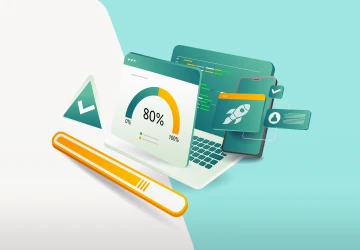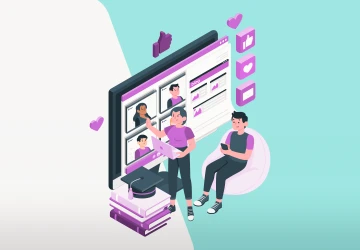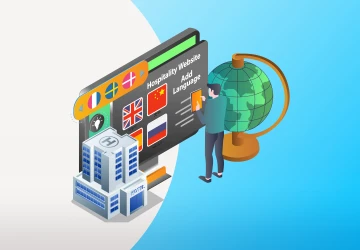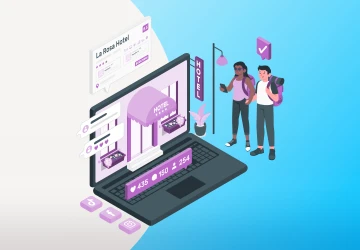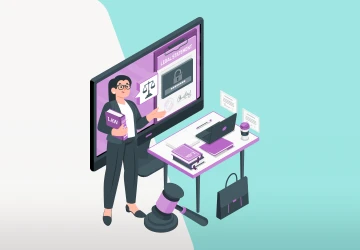The Importance of Landing Pages: How One Page Can Transform Your Brand
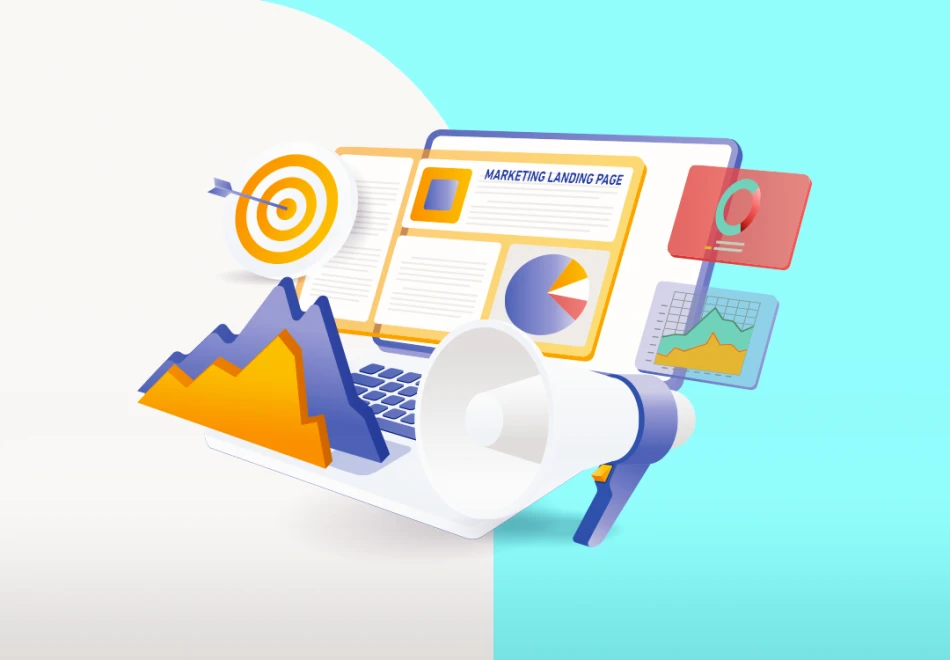
Marketing landing pages could be the missing piece your sales funnel pages need.
While homepages are great for giving visitors a feel for your brand, they often do too much at once—leaving people overwhelmed.
Marketing landing pages, on the other hand, focus on just one thing: getting visitors to take action.
They cut out all the distractions, and because these optimized landing pages load quickly, they guide visitors smoothly through your sales funnel pages.
In this article, we’ll break it all down together—what marketing landing pages are, how they work, and why they’re different from homepages.
We’ll also explore key elements, different types, and how to make your pages load faster to keep visitors engaged.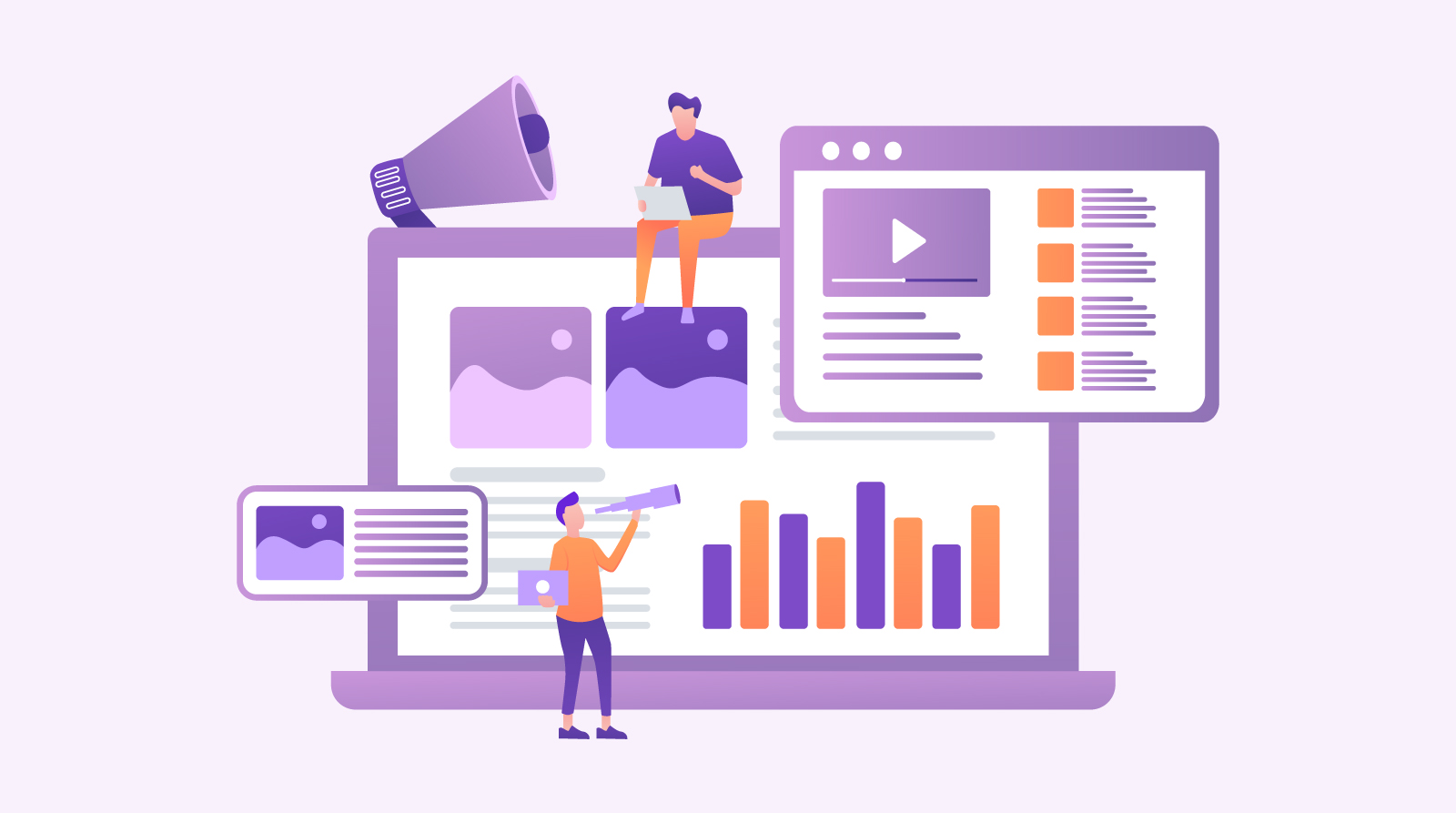
What Are Landing Pages and How They Operate?
A marketing landing page is a simple webpage with one goal: to get visitors to take a specific action.
Whether it’s signing up for a newsletter, buying a product, or registering for an event, the focus of a landing page is to guide people toward that action.
These pages are all about conversions, and they do this by using clear, attention-grabbing calls-to-action (CTAs) like "Start Free Trial," "Get Started," or "Subscribe Now."
So, how do people end up on these sales funnel pages?
Most often, they get there by clicking on ads from pay-per-click (PPC) campaigns, but marketing landing pages are also linked to social media posts, emails, organic search results, and even your website's homepage.
The magic of a landing page lies in its targeted design.
Unlike your homepage or other general pages, optimized landing pages load quickly cut out distractions like navigation menus, and focus only on the offer.
This makes it easy for visitors to stay focused on your message and take the action you want them to.
For example, if you’re promoting a free trial, the landing page will highlight only the benefits of the trial and show a big, clear "Sign Up Now" button.
On the other hand, a landing page for a webinar might feature a short form to collect names and email addresses, making it easy to register.
Landing Pages vs. Homepages: What Are the Key Differences?
At first glance, homepages and landing pages might seem similar.
They’re both part of your website and often the first thing visitors see.
But they serve very different purposes, and understanding these differences is key to building a strong online presence.
A homepage is like your website’s front door. It gives visitors an overview of who you are, what you offer, and how they can explore further.
For example, the homepage of a clothing store might show options like “Shop New Arrivals,” “Browse Sale Items,” or “Learn About Our Sustainable Practices.”
There’s plenty of navigation, with links to sections like “About Us,” “Contact,” or “Products.”
The goal?
To help visitors explore your site and learn more about your brand.
On the other hand, marketing landing pages are all about focus.
These pages are created for specific campaigns or promotions and have one job: to get visitors to take a particular action.
Unlike homepages, optimized landing pages load quickly, have no distractions like navigation links and feature a single, clear call-to-action (CTA).
For instance, a landing page for a meal subscription service might have a bold headline like “Get Your First Box for $19.99,” a quick explanation of the benefits, and a prominent “Sign Up Now” button.
That’s it—no extra links, no distractions.
Let’s break it down in a quick comparison:
Now let’s look at an example.
Alweb, a platform that helps users create professional websites, has a homepage that’s designed to educate and invite exploration.
The headline reads, “Create Your Website in Just 60 Seconds,” and visitors can navigate to sections like “Pricing,” “Templates,” or “Features.”
It’s packed with information for first-time visitors who want to learn what the platform can do.
But when Alweb runs a marketing campaign, they use a focused landing page instead.
Imagine a page promoting a limited-time offer: “Get 20% Off on the Premium Plan.”
This landing page would have a simple headline, a brief explanation of the plan’s benefits, and a single, eye-catching “Subscribe Now” button.
There are no navigation links to distract visitors.
The goal?
To guide them straight through the sales funnel page and convert them into paying customers.
What Is the Importance of Landing Pages?
1. Streamline Lead Generation
Landing pages are hands down one of the best tools for generating leads.
Here’s the thing: if you’re sending traffic from emails, social media, or search ads to your homepage, you’re making it harder for visitors to take action.
Homepages are built for exploration—they have lots of links, options, and information.
While that’s great for learning about your brand, it’s overwhelming for someone who came looking for something specific.
This is where marketing landing pages shine.
They focus on one goal—whether it’s signing up for a free trial, downloading an e-book, or joining a webinar.
Say you’re running a social media campaign offering a free guide.
Instead of directing people to your homepage (where they might get lost or distracted), you send them to a landing page designed just for the guide.
The page has a clear message, a quick description of the guide’s value, and a simple form asking for their name and email.
This approach is far more effective.
Visitors know exactly what to do, and you capture their details effortlessly.
Once you have those leads, you can segment them based on their interests, nurture them with follow-up emails, or pass them to your sales team for personalized outreach.
Marketing landing pages don’t just simplify lead generation—they supercharge it.
They cut through the noise, provide clarity, and guide visitors straight into your sales funnel pages.
When you use optimized landing pages that load quickly, the experience becomes even smoother, keeping visitors engaged and boosting your chances of conversion.
2. Provide a Dedicated Space for Your Offers
When a company launches a new product or service, you’ve probably seen their ads popping up on social media, in your email, or on search engines.
But here’s the thing—too often, they send all that traffic straight to their homepage.
That’s like inviting someone to a restaurant and forgetting to tell them where to sit!
Visitors might click around for a while but then leave without doing anything meaningful.
This is where marketing landing pages shine.
They’re designed to give your offers their own dedicated space, making everything clear and easy for visitors.
For example, imagine you run a painting business, and you’re offering a free guide called “10 Tips for Choosing the Perfect Paint Color.”
Instead of directing visitors to your homepage (where they could get distracted), you send them to a landing page built just for the guide.
The page explains why the guide is valuable, shows a quick preview, and asks for their name and email to access it.
Marketing landing pages work so well because they keep things simple and focused.
Visitors know exactly what they’re getting (the guide) and what’s expected of them (their contact info).
This isn’t just about sharing something useful—it’s about collecting high-quality leads who are genuinely interested in your business.
Once you have those leads, you can organize them into segments, nurture them with follow-up campaigns, or pass them directly to your sales team.
3. Gather Valuable Prospect Demographics
Marketing landing pages aren’t just about getting conversions—they’re also amazing tools for learning more about your audience.
Every time someone fills out a form on your marketing landing pages, they’re giving you useful details about themselves.
These details aren’t just contact info; they’re clues that help your marketing and sales teams understand who your visitors are and what they care about.
Here’s how it works: let’s say a visitor fills out a form to download your free guide or register for a webinar.
They might share their name, email, job title, or industry.
Simple, right?
But this small action gives you big insights.
You now know more about who’s engaging with your content and what interests them.
For your marketing team, this is like striking gold.
They can look at the data and figure out patterns.
For example, are your leads mostly from certain industries? Are they small business owners or working in a specific role?
These insights help shape your buyer personas and guide your future campaigns.
When you know who’s converting, you can design better offers to attract even more of the right people.
Your sales team benefits too.
Before they even reach out to a lead, they already have a head start.
They know what the lead downloaded or signed up for and might even understand some of their pain points.
This makes conversations smoother and more personalized, increasing the chances of turning leads into loyal customers.
4. Identify Your Most Engaged Prospects
To plan the best sales and marketing strategies, you need to know which of your leads are genuinely interested in your business.
This is where marketing landing pages help.
They don’t just help you capture new leads—they also let you track when existing leads return to interact with your offers, which gives you valuable insight into who’s most engaged.
Let’s say a prospect downloaded an e-book from your site a month ago.
Now, they’ve come back and signed up for a webinar through another landing page.
This is a clear sign they’re still interested in what you offer, and they’re more engaged than a lead who hasn’t interacted with your site since their first visit.
These are the leads that deserve your attention!
By tracking this kind of behavior, you can get a better understanding of what your leads care about.
Are they signing up for offers related to specific products? Do they keep coming back for more resources like webinars or guides?
This helps your sales team tailor their outreach and make the conversation more relevant.
For example, if a lead keeps engaging with content about solar energy systems, your sales team can skip the generic pitch and dive straight into discussing solar solutions.
This makes the conversation more focused and increases the chances of moving that lead further down your sales funnel pages.
5. Support and Amplify Other Marketing Efforts
Marketing campaigns need strong tools to make them work smoothly, and marketing landing pages are a must-have.
These pages act as the perfect destination for your audience, whether they’re coming from social media, email, search engines, or ads.
Say you’re running a social media campaign offering a free guide.
You post exciting updates and links everywhere, and people start clicking.
If those clicks take them to your homepage, they might get distracted and leave before finding what you promised.
But with a dedicated landing page, it’s a different story.
Visitors see exactly what they clicked for—a clear description of your guide and a simple form to fill out.
No distractions, just action.
That’s how conversions soar.
The same logic applies to email campaigns.
Let’s say you’re inviting people to a webinar.
Instead of a generic link, you send them to a landing page built just for that webinar.
Everything they need is right there—a quick explanation, a sign-up form, and nothing else to pull their attention away.
The result?
More sign-ups, faster.
Even in organic search, marketing landing pages play a big role.
A search-optimized landing page with great content can rank high in search engine results, attracting new visitors over time.
For example, a page explaining the details of an offer can not only convert users but also act as a long-term traffic magnet.
6. Gain Insights into Offer Performance
We often use tools like Google Analytics to check how our marketing campaigns are doing.
But marketing landing pages can give us even more detailed insights.
Each time you create a landing page, you're not just sharing an offer—you're also gathering valuable data.
By looking at the numbers from your landing pages, you can see which offers your audience likes best.
For example:
Is your free checklist getting more sign-ups than your webinar?
Do visitors prefer a short form over a longer one?
These insights help you understand what your audience finds appealing.
Landing pages also let you see trends over time.
You can watch how conversion rates change when you make updates—like changing the text, improving the design, or making the page load faster.
For instance, if your optimized landing pages load quickly and you notice more people are signing up, that's a good sign your changes are working.
This information helps you make smarter choices.
If one landing page is doing well, you can use what you learned to improve other campaigns.
If another page isn't performing as well, the data can show you what might need fixing, like the headline or the call-to-action button.
7. Align with Pay-Per-Click (PPC) Campaigns
Pay-per-click (PPC) campaigns are a type of online advertising where you pay a fee every time someone clicks on your ad.
These ads usually appear on platforms like Google or social media and are designed to bring people directly to your website.
The idea is to target specific keywords or audiences so your ads reach the people most likely to be interested in what you’re offering.
Now, this is where marketing landing pages come in.
When someone clicks on your PPC ad, they expect to land on a page that delivers on the promise of the ad.
If your ad promotes a special deal or product but sends users to a general homepage, they might get confused or lose interest and leave.
A marketing landing page fixes this problem by matching the ad perfectly.
It gives visitors exactly what they’re looking for, with no distractions.
Google loves this kind of relevance.
When your PPC ad links to a highly relevant landing page, Google gives your ad a better quality score.
This can lead to higher ad placements in search results and even lower costs per click.
8. Facilitate Easier Testing and Optimization
Since a landing page zeroes in on just one goal, tweaking and perfecting it is way simpler than fussing over a complex website full of distractions.
This focused approach turns marketing landing pages into super-effective tools for boosting your conversion rates.
Here’s the scoop: You can mess around with pretty much everything on your landing page.
Want to see if a punchy, informal tone grabs more attention than a professional, straightforward style? Or figure out if a bold video beats a static image in keeping people glued to the page?
Go for it.
You can even test different keywords to see which ones pull in more traffic.
For instance, you might pit two headlines against each other—one that flaunts a product's coolest feature and another that spells out how it'll solve the user's problem.
Personalizing your page can crank up its power too.
When you tailor the content to fit your audience—like tossing in details that click with their specific needs or location—it makes the whole experience feel more relevant and engaging.
Picture this: you're targeting folks interested in solar panels.
If you highlight benefits tailored to their region, like showing how well those panels work in cloudy weather for Seattle residents, you’re likely to hook their interest more effectively.
Here’s what testing could look like:
Swap out a video header for a static hero image and track which version keeps people around longer.
Try different calls to action—maybe “Sign Up Now” versus “Get Started”—and see which one scores more clicks.
Play with the length of your copy. Test a snappy, brief version against a more detailed one to find the sweet spot that gives enough info without overwhelming visitors.
The best part?
Landing pages are quick to adjust and the results are easy to track, so you can keep refining them until they’re just right.
This means your audience always gets a smooth, engaging experience.
What Are the Essential Elements of a High-Performing Landing Page?
1. Compelling Headline
When visitors land on your page, the headline is the first thing they’ll see—and it’s your one shot to make a great first impression.
A strong headline grabs their attention instantly and clearly tells them what’s in it for them.
In other words, it answers the question, “What will I get if I take action on this page?”
For instance, if your marketing landing page is promoting a free e-book about email marketing, a headline like “Master Email Marketing: Download Your Free Guide Now” works perfectly.
It’s clear, direct, and immediately tells visitors what they’ll gain (email marketing skills) and what they need to do (download the guide).
But a compelling headline goes beyond just clarity. It should also connect with your audience emotionally.
It might address a problem they’re facing, promise a solution, or highlight a benefit that gets them excited.
For example, “Boost Your Sales in 30 Days with These Proven Email Tips” adds an extra hook by focusing on a specific, desirable outcome—making it even more engaging.
You can think of the headline as the gateway to your sales funnel pages.
If it’s strong enough to grab attention and communicate value in just a few seconds, visitors are more likely to stick around, explore the page, and ultimately convert.
2. Persuasive Body Copy
After the headline hooks them, your body copy needs to reel them in.
This is where you lay out what’s up for grabs in a way that’s easy to get and hard to resist.
Keep your copy crisp and to the point. Long paragraphs are a no-go because, let’s face it, attention spans aren’t what they used to be.
Bullet points can be a real lifesaver here—they help you highlight the key bits without getting bogged down in too much text.
Say you're promoting a webinar on social media marketing.
You could list the perks like this:
Master strategies to ramp up engagement.
Uncover tools to fine-tune and measure your success.
Grab practical tips straight from the pros.
This setup not only makes it super quick for visitors to see why they should care but also keeps your message clear and engaging.
Your writing should feel like you’re having a chat with your reader, not giving a lecture.
It's about connecting, understanding their needs, and showing them how your offer makes things better or easier.
3. Targeted Keywords
Keywords tell both search engines and visitors what your page is all about.
Just like in any piece of content you're using to draw people in, your marketing landing pages need those carefully chosen keywords sprinkled throughout to make sure the right folks find you.
So, here's what to do: pop your main keyword into key places like the page title, headers, and through the body of your text.
Say you've got a landing page that's offering a guide on social media marketing.
You'll want to include "social media marketing guide" in your headline, in the subheadings, and here and there in the text, but keep it natural.
Remember, it's not about cramming as many keywords as possible.
That just makes your page sound robotic and spammy.
Instead, you want to weave them into your content so they fit smoothly and naturally.
For instance, you could say, “Grab our social media marketing guide to discover top strategies for ramping up engagement and driving traffic.”
See?
The keyword fits right in without sticking out.
Including these targeted keywords means your landing page is more likely to pop up higher in search engine results.
More visibility means more organic traffic, which usually leads to more leads or sales.
Plus, it helps ensure that the people who land on your page are looking for what you’re offering since the keywords will match their search queries.
4. Integrated Social Sharing Options
Adding social sharing buttons to your marketing landing pages is like giving your content a free ticket to travel across social networks.
It’s a simple tweak, but boy, does it make a difference!
These little buttons allow anyone who visits your page to share it easily with their friends, followers, or professional connections on platforms like Facebook, LinkedIn, and Twitter.
Here’s the thing: imagine someone stumbles upon your landing page and thinks, “Wow, this is great!”
Maybe it's a free webinar on email marketing strategies that they find super useful.
With social sharing options right there on the page, they can click to share this gem with their network on LinkedIn.
Just like that, your page gets in front of hundreds or thousands more people who might also find it valuable.
Think about this ripple effect!
5. Minimal or Hidden Navigation
On marketing landing pages, you want visitors laser-focused on what you want them to do—sign up, buy, or download.
One smart way to do this?
Keep those navigation menus out of sight.
Think about it: when you hide those top and side navigation bars, you're cutting out the clutter and distractions.
This means visitors are less likely to wander off and more likely to do what you’ve brought them there for.
It’s all about making their journey on your page as straightforward as possible.
For example, imagine your landing page is all about a one-time deal.
If there are no links tempting visitors to click elsewhere, they're way more likely to focus on that deal and act on it.
This direct approach helps lower the chance of people bouncing off the page and boosts the odds of them converting.
6. Focused Lead-Capture Form
A focused lead-capture form is one of the most important parts of any successful marketing landing page.
Its job is simple: ask for the information you need while making it easy for people to fill out.
Here’s the trick—keep the form short and to the point.
If you’re offering something like a free guide, all you really need is their name and email.
Asking for extra details, like their phone number or company size, can feel like too much work and might scare people off.
The simpler the form, the more likely they are to complete it.
A clear and focused form helps reduce any hesitation visitors might have.
Pair that with a landing page free of distractions (like navigation bars or unnecessary links), and you’ve got a winning combo that encourages people to take action.
Think of it this way: your lead-capture form is the bridge between your landing page and your sales funnel pages.
A well-designed, straightforward form doesn’t just help you collect leads—it also makes the experience smoother and more pleasant for your visitors.
That means more conversions and happier prospects
7. Relevant, High-Quality Imagery
Images are a key part of any marketing landing page because they instantly show visitors what they’re getting into.
A good image isn’t just there to look nice—it helps people understand your offer and makes your page more appealing and engaging.
Say your landing page is for a fitness challenge.
Instead of relying on words alone, a photo of someone completing the challenge or a preview of the workout plan adds excitement.
It shows visitors exactly what they can achieve and makes the offer feel more real.
Or, if you’re showcasing a software product, a clean screenshot of the software in action helps potential customers picture how it could make their lives easier.
The trick is to pick images that are relevant and high-quality.
A random or blurry picture can confuse visitors and make your page look less trustworthy.
But a well-chosen image that matches your offer—like a photo of an interactive event for a webinar or a professionally staged product shot—can help visitors feel confident about what you’re offering.
Good visuals also break up big blocks of text, making your page easier to read and keeping people engaged.
And when paired with optimized landing pages that load quickly, these images don’t just look good—they also improve the overall experience without slowing anything down.
What Are the Common Landing Page Variations?
1. Lead-Generating Landing Page
For marketing landing pages, a lead-generating landing page is one of the most powerful tools in your sales strategy.
These pages are designed to capture visitor information—like their email or job title—in exchange for something valuable, such as an eBook, webinar, or guide.
They play a crucial role in guiding potential customers further down your sales funnel pages while ensuring your optimized landing pages load quickly for maximum engagement.
Here’s how they work: visitors often arrive at a lead-generating landing page via pay-per-click (PPC) ads, social media links, or email campaigns.
The page showcases a clear marketing message highlighting the value of the offer and includes a simple form where visitors can submit their information.
Once they fill it out, they receive the promised asset, whether it’s a downloadable guide or access to a webinar.
Why are these pages so effective?
They eliminate distractions.
There’s no navigation or extra links—just one clear action for visitors to take: fill out the form.
This focused approach boosts conversion rates and provides a great return on investment for businesses running PPC campaigns.
To create a high-performing lead-generating landing page, focus on:
Strong Headlines: Use a clear, benefit-driven headline that immediately communicates what the visitor will get.
Visual Appeal: Include relevant visuals, like a preview of the eBook cover or a webinar screenshot, to make the offer feel more real.
Compelling CTAs: Add calls-to-action like “Download Your Free Guide” or “Sign Up Now” to encourage action.
Smart Forms: Keep forms simple by asking only for essential details. If necessary, include fields like “Company Name” or “Job Title” to qualify leads.
2. Click-Through-Focused Landing Page
A click-through landing page is like a stepping stone.
Its main job is to warm up visitors, giving them the information they need to feel ready for the next step—usually clicking through to a checkout or signup page.
Unlike other marketing landing pages, it doesn’t try to close the deal right away.
Instead, it focuses on educating and building interest, gently moving visitors further down your sales funnel pages.
Here’s an example: imagine you’re running an ad for a subscription service.
Instead of directing visitors straight to a checkout page (which might feel too abrupt), you send them to a click-through landing page.
This page lays everything out—what the service does, why it’s valuable, and how it can help them.
It might include a few customer testimonials or even a short demo video.
The idea is to make visitors feel informed and confident enough to click that "Start Free Trial" or "Sign Up Now" button.
Businesses love click-through pages because they’re perfect for offering things like free trials, special discounts, or limited-time coupons.
For example, if an online store is running a sale, the click-through page might explain the details of the deal and show why it’s a great opportunity.
The goal is to excite visitors and make them curious enough to take the next step, without overwhelming them.
Here’s what makes a click-through landing page effective:
Focus on the Offer: Make it crystal clear what the visitor is getting, whether it’s a discount, trial, or demo.
Show the Value: Use visuals, benefits, or success stories to explain why the offer is worth their time.
Strong Call-to-Action (CTA): Keep the focus on one action, like “Claim Your Discount” or “Learn More.”
Simplicity is Key: Avoid clutter or too many distractions—guide visitors naturally to the next step.
Think of a click-through page as a way to “warm up” your audience.
It gives them all the information they need, builds trust, and removes hesitation before leading them to the final step.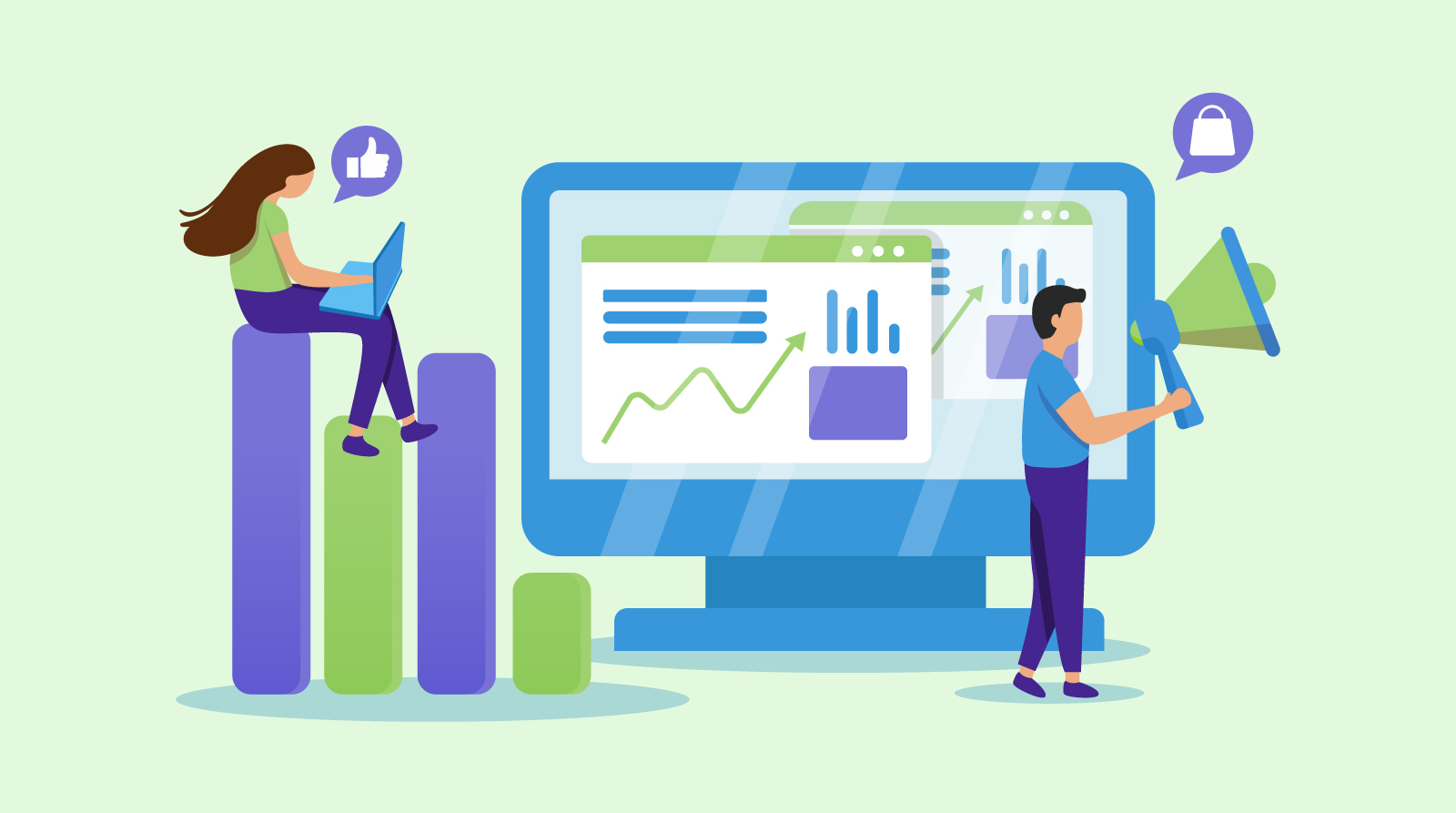
3. Introductory Splash Page
An introductory splash page is designed to grab attention, set the tone, and share a quick message before visitors move on to the main destination.
Unlike most marketing landing pages, splash pages aren’t focused on conversions.
Instead, they serve a specific purpose, like making an announcement, asking for preferences, or ensuring compliance with certain requirements.
Picture this: you visit a website, and the first thing you see is a full-screen image announcing an exciting event or sale.
There’s minimal text, a bold background, and a simple action to take, like clicking “Shop Now” or selecting your preferred language.
That’s exactly how a splash page works—it’s quick, visually appealing, and straight to the point.
Here’s how companies commonly use splash pages:
Announcements: To promote something special, like a product launch, event, or limited-time sale.
Preference Settings: To let visitors choose their language or region, ensuring a tailored experience.
Age Verification: Often used by industries like alcohol or gaming to confirm users meet age restrictions.
For example, imagine a global e-commerce site launching a holiday sale.
They might use a splash page with a festive design, a countdown timer, and a clear “Shop the Sale” button.
Or, a site targeting international audiences could greet visitors with a splash page asking them to select their preferred language, making navigation easier from the start.
4. Squeeze Page for Subscriber Growth
A squeeze page is a straightforward, no-fluff type of marketing landing page designed to collect one key piece of information—usually an email address—from visitors.
Unlike lead capture pages, squeeze pages are shorter, simpler, and laser-focused on achieving a single goal.
They’re a quick way to grow your email list or generate leads while keeping things as streamlined as possible.
Think of it as a fast lane for conversions.
There’s no room for distractions—no images, long paragraphs, or extra links.
Instead, you’ll find a clear headline, a brief description of the offer, and one direct call-to-action (CTA).
For example, imagine a squeeze page offering a free eBook on email marketing.
The headline might say, “Unlock Your Free Guide to Better Email Marketing!”
Underneath, there’s a single sentence explaining the value of the guide and a short form asking for the visitor’s email address.
That’s it—no bells, no whistles, just a simple, effective pitch.
Squeeze pages aren’t limited to eBooks or downloads.
Businesses use them for a variety of purposes, like booking appointments, scheduling consultations, or securing RSVPs for events.
For instance, a real estate agent could create a squeeze page to invite visitors to an open house, offering the address and details once they’ve signed up.
And for companies just starting with marketing landing pages, squeeze pages are a solid choice.
They’re easy to set up, deliver fast results, and don’t require much effort to maintain.
5. Engaging Thank You Page
A thank you page on your marketing landing pages isn’t just a polite follow-up—it’s a chance to keep the conversation going and build a stronger connection with your audience.
When someone takes action, like downloading a guide or making a purchase, they’re showing interest in what you offer.
A great thank you page helps you nurture that interest and gently guide them further through your sales funnel pages.
Start by genuinely thanking your visitor.
A simple “Thank you for signing up!” or “We appreciate your purchase!” shows you value their time and effort.
But don’t stop there—use this moment to keep them engaged.
For instance, if they’ve downloaded an eBook, your thank you page can suggest a related webinar or another guide to explore.
If they’ve just made a purchase, why not offer them a discount code for their next order?
This keeps them excited about coming back.
Here are a few ideas to make your thank you page even more engaging:
Show Social Proof: Add reviews or testimonials to build trust and show others have benefited from your offer.
Offer a Bonus: Share an exclusive discount, free resource, or special deal to add extra value.
Share More Content: Link to your blog or helpful articles to encourage visitors to explore further.
Get Social: Invite them to follow you on social media for updates and tips.
For example, your thank you page could say:
“Thanks for downloading! Your guide is on its way to your inbox. In the meantime, check out our blog for more marketing tips or follow us on Instagram for daily insights. Use code THANKYOU10 for 10% off your next purchase!”
6. In-Depth, Long-Form Sales Page
An in-depth, long-form sales page is like the online version of a TV infomercial.
You know the ones: at first, you’re skeptical, but the more they explain the product, show testimonials, and highlight benefits, the more you start to think, “Maybe this is worth it.”
That’s exactly the goal of a long-form sales page—to give visitors all the information they need to confidently make a purchase.
These pages are usually found at the lowest part of the sales funnel pages, where you’re no longer just asking for an email address or simple sign-up.
Instead, you’re going for the close—you want visitors to make a purchase.
To do that, you need to create a persuasive, detailed pitch that addresses their doubts and motivates them to take action.
A long-form sales page typically includes:
Compelling Testimonials: Real stories from satisfied customers build trust and credibility.
Clear Benefits and Features: Highlight what makes your product unique and why it’s worth the investment.
Videos and Visuals: A demo video or images of your product in use can make the offer more tangible.
Strong Calls-to-Action (CTAs): Encourage visitors to buy now, sign up, or claim a special deal.
Discount Codes or Special Offers: Adding urgency, like a limited-time discount, can nudge visitors toward a decision.
For example, imagine you’re selling an online course.
A long-form sales page might open with a bold headline, like “Master Digital Marketing in 8 Weeks—No Experience Needed!”
Below that, you’d include testimonials from past students, a breakdown of the course modules, a short video from the instructor, and a “Sign Up Now” button.
Adding a countdown timer for a discounted price could create urgency and encourage immediate action.
The key to success is thoroughness.
A long-form sales page doesn’t just scratch the surface; it dives deep, addressing potential concerns, offering proof, and showcasing the value of the product.
It’s designed to leave no room for doubt.
For businesses, these pages are incredibly effective for closing sales, especially for high-value products or services.
7. Streamlined Unsubscribe Page
Even when someone decides to leave, your marketing landing pages can turn the moment into an opportunity.
An unsubscribe page doesn’t have to feel like the end—it can be your chance to reconnect, show you care, and maybe even convince them to stay.
Instead of simply letting a subscriber go, give them options.
If they’re unsubscribing from your emails, let them adjust how often they hear from you or choose which types of updates they want to receive.
For example, a message like, “Not feeling the daily emails? Switch to weekly updates instead!” can make a big difference.
It shows you’re listening and willing to meet them halfway, which might make them reconsider leaving altogether.
For paid services, an unsubscribe page can be your final chance to highlight what they’ll miss.
Remind them of the benefits they enjoy—like exclusive features or premium content.
You can even sweeten the deal with an offer, like “Wait! Enjoy 20% off for the next three months if you stay with us!”
This small gesture can make them think twice about their decision.
Adding humor or warmth can also soften the experience.
A playful message like, “We hate goodbyes! But if you must go, follow us on Instagram so we can still be friends!” keeps things light and leaves a positive impression.
Even if they decide to leave, they’ll remember your brand in a good way.
8. Teaser ‘Coming Soon’ Page
Sometimes, when you’re scrolling online, you stumble upon something that catches your eye—a teaser that makes you curious and excited.
That’s exactly what a teaser ‘coming soon’ page is designed to do.
These marketing landing pages are all about creating buzz and anticipation for an upcoming product, service, or website launch without revealing everything upfront.
A good coming soon page is simple but powerful.
Picture a bold, eye-catching headline paired with a striking visual, like “Big Things Are Coming! Sign Up to Be the First to Know.”
Add a countdown timer or a clear launch date, like “Launching in 10 Days!”, to create urgency and excitement.
These little details keep visitors engaged and eager to check back when it’s time.
Also, including a “Notify Me” email form lets visitors stay in the loop while you build an audience for your launch.
Once they’ve signed up, you can send them updates, exclusive sneak peeks, or special offers.
This not only generates excitement but also ensures your sales funnel pages are ready to perform as soon as you go live.
Even if you’re just updating your website, a coming soon page still works wonders.
A “website under construction” message, paired with a fun design and a sign-up form, reassures visitors that something exciting is on the way while keeping them connected to your brand.
9. Dedicated Product Page
A dedicated product page is like giving your star product its own stage.
Unlike a regular homepage that showcases everything your brand offers, this type of marketing landing page focuses entirely on one product.
It’s your chance to dive deep into the product’s features, highlight its benefits, and explain exactly how it solves a problem for your customers.
Think of it as a personal sales pitch for your product.
These pages are especially popular in industries like retail and tech, where potential customers need detailed information to make a decision.
A dedicated product page answers the big questions: What is this product? How does it work? Why should I care?
For example, let’s say you’re launching a new pair of noise-canceling headphones.
Instead of sending visitors to a general product page filled with other gadgets, you create a dedicated landing page just for these headphones.
It includes sleek images, a video showing how the headphones work, and a list of standout features like “Unmatched Sound Clarity” and “Battery Life That Lasts All Day.”
This helps visitors fully understand the value and unique features of the product, increasing their likelihood of buying.
A great dedicated product page is all about the visuals.
Adding high-quality photos, videos, and interactive demos makes the product feel more real and relatable.
For example, a 360-degree view of the headphones or a video showing someone using them in a busy café can help visitors imagine how they’d benefit from the product in their own lives.
10. Event-Focused Landing Page
In today’s busy world, people won’t attend your event unless they see why it’s worth their time. That’s why an event-focused landing page is essential.
Unlike regular marketing landing pages, this type is tailored to highlight your event’s unique benefits, get people excited, and make it super easy for them to sign up.
These optimized landing pages grab attention by showcasing everything that makes your event special.
Whether it’s a tech workshop, a leadership summit, or a product launch, your page should answer the big questions: What’s in it for me? Who will I meet? Why should I register now?
For example, a tech conference page might feature star speakers, hands-on sessions, and networking opportunities to entice visitors.
To really draw people in, use visuals.
Include photos or videos from previous events to show off the energy and value attendees can expect.
Adding a countdown timer is another great way to build urgency, reminding visitors how much time they have left to sign up.
A message like “Just 3 days left to register—don’t miss out!” can create that all-important FOMO (fear of missing out).
Make the registration process as simple as possible.
Ask for only the basics, like name and email, so it’s quick and stress-free for visitors to complete.
For instance, if you’re hosting a leadership summit, your landing page could lead with a headline like, “Take Your Leadership Skills to the Next Level at Summit 2024!”
Highlight the agenda, speaker profiles, and testimonials from past attendees to build credibility and excitement.
Finish with a strong CTA, like “Register Now and Secure Your Spot!”
11. Conversion-Centric Sales Page
A conversion-centric sales page is where all the hard work of your sales funnel pages pays off.
This is the page that takes a prospect from thinking about buying to actually making a purchase.
It’s no longer about gathering leads or creating curiosity—it’s about closing the deal.
Creating this type of marketing landing page takes finesse.
You need to know your audience inside out—what they care about, what they need, and what might hold them back.
Push too hard, and they’ll feel pressured. Be too soft, and they might lose interest.
It’s about striking the perfect balance between persuasion and comfort.
The foundation of any great sales page is a strong, clear pitch.
You need to show your audience why your product is worth their money and how it will solve their problem.
The way you present this depends on your product.
For example, if you’re selling a meal delivery service, your page might say something like, “Healthy Meals Delivered to Your Door in 30 Minutes or Less.”
From there, you’d highlight benefits—like saving time and eating better—and include testimonials from satisfied customers.
A video showing how easy it is to use the service could add even more trust and excitement.
The length of your sales page depends on the product.
If it’s a simple, low-cost item, a short page with a punchy pitch and a strong call-to-action (CTA) might do the trick.
For more expensive or complex products, you’ll need a longer page with detailed information, reviews, and FAQs to reassure potential buyers.
12. Informational ‘Infomercial’ Page
Infomercials might remind you of those energetic late-night TV ads from the 90s, but their strategies are still alive and thriving—just in a digital format.
Enter the informational ‘infomercial’ page, a type of marketing landing page that uses storytelling and emotion to captivate readers and guide them toward a purchase.
Unlike squeeze pages or lead-generation pages, an infomercial landing page takes its time.
It doesn’t just present an offer—it draws visitors in with a detailed, compelling narrative.
Here’s how these pages work:
Start with a Hook: Begin with an engaging opening that grabs attention, like a bold claim or relatable problem. For instance, “Tired of waking up tired? Here’s how you can transform your mornings!”
Build Emotion: Use persuasive language and storytelling to connect with your audience. Share testimonials, relatable scenarios, or a “before and after” journey.
Highlight the Product’s Value: Dive into the features and benefits, showing how the product solves a specific problem or improves the reader’s life.
Guide Toward Action: Keep the energy high with a clear, enthusiastic call-to-action (CTA), like “Order Now and Save 30%!”
For example, let’s say you’re selling a revolutionary kitchen gadget.
Your page could tell the story of a busy parent who struggles to cook healthy meals, then show how this gadget saves time and effort while creating nutritious dishes.
Add in customer testimonials, vibrant photos, and maybe a video demonstration, all while weaving an emotional narrative.
The key to success lies in the tone and infomercial pages thrive on excitement and energy.
So, the copy should mirror the enthusiasm of a late-night TV host while staying relatable and genuine.
13. Viral-Optimized Landing Pages
Viral-optimized landing pages are all about creating buzz and getting people to share your content.
The main goal isn’t to sell something or collect emails—it’s to spread your brand’s message far and wide, making sure it gets in front of as many people as possible.
These marketing landing pages rely on fun, engaging, and highly shareable content that people love to pass around.
Here’s how they work: these pages grab attention with creative and interactive elements.
The content can be anything from a funny video or eye-catching infographic to a quick quiz or a simple game.
The key is to make the page so entertaining or valuable that visitors can’t help but share it with their friends and followers.
For example, imagine a coffee company creating a viral page with a game called “How Many Cups Can You Balance?”
Visitors play, laugh, and then share their scores on social media.
Each share brings more traffic to the page, introducing more people to the brand in a fun, indirect way.
Even though these pages focus on engagement, they still gently point visitors toward your brand.
Subtle links to your website or product pages ensure curious visitors can explore more if they want to.
What makes a viral-optimized landing page work?
Exciting Content: Use something people love—like a relatable meme, a funny video, or an interactive quiz.
Easy Sharing: Add social media buttons so visitors can instantly share the page with one click.
Soft Branding: Mention your brand without being pushy. Focus on the fun and let your logo or a subtle link do the rest.
Interactive Elements: Games, polls, and quizzes keep visitors engaged and coming back for more.
For instance, a skincare brand could create a page with a quiz titled, “What’s Your Skincare Personality?”
After taking the quiz, visitors can share their results and get tips tailored to their answers.
Meanwhile, a small link encourages them to check out products designed for their skin type.
14. Standalone Microsites
A standalone microsite is like a mini-website with a single purpose.
Instead of being a regular marketing landing page, it’s a small, focused website with several pages dedicated to one specific campaign, product, or sales goal.
Microsites are perfect for big campaigns or launches.
Let’s say a clothing brand is unveiling a sustainable fashion line.
They might create a microsite with pages showcasing the collection, explaining their eco-friendly practices, and featuring customer stories.
While their main website covers everything the brand offers, the microsite focuses entirely on this new line.
These sites are often tied to online ads, social media campaigns, or even TV commercials.
For example, a car company might promote a new electric vehicle with an ad that directs viewers to a microsite.
There, they can explore the car’s features, watch demo videos, and even book a test drive—all in one place.
Proven Practices for Landing Page Success
1. Maintain Consistent Messaging
In the world of marketing, clarity and simplicity are your best friends.
When creating marketing landing pages, it’s all about getting your message across quickly and effectively.
Visitors who land on your page don’t want to hunt for information—they need to instantly understand what you’re offering and why it matters to them.
That’s where consistent, focused messaging comes in.
Let’s say you’re offering a free eBook. Your landing page should immediately address the visitor’s question: “What’s in it for me?”
A straightforward headline like “Boost Your Marketing Skills: Download Our Free Guide” instantly communicates the value of your offer.
It grabs attention, builds curiosity, and encourages visitors to stay and learn more.
Consistency plays a huge role here.
The message on your landing page should match the ad, email, or social post that brought the visitor there.
If your ad says, “Limited Time Offer: 50% Off!” your landing page should repeat that exact offer.
Any mismatch can confuse visitors and make them second-guess your credibility, leading to a quick exit.
2. Optimize Page Loading Speed
In today’s fast-moving digital world, no one likes to wait—especially visitors to your marketing landing pages.
A smooth, fast experience is key to keeping them engaged.
If your page takes too long to load, chances are they’ll leave before even seeing what you’re offering.
A quick-loading page doesn’t just make visitors happy—it keeps them interested and prevents them from bouncing to another site.
Imagine clicking on a page, only to stare at a blank screen or watch images load painfully slowly.
Most people won’t wait around, even if the offer is amazing.
To ensure your page loads quickly, there are a few simple tweaks you can focus on.
First, keep the design clean and focused.
Only include elements that directly support your message and conversion goal—cut anything extra.
Second, shrink and compress your images so they load faster without looking blurry.
High-quality visuals are important, but they shouldn’t slow things down.
Finally, use caching to speed up how quickly your content appears, especially for returning visitors.
3. Run A/B Tests for Improvement
If you want your marketing landing pages to perform at their best, you need to know what works—and what doesn’t—for your audience.
That’s where A/B testing comes in.
It’s a simple way to compare two versions of your landing page, like testing different headlines, images, or calls-to-action (CTAs), to see which one gets better results.
Think of it as experimenting to find the winning formula.
Start with your headline—it’s the first thing visitors see, so it needs to be clear, compelling, and optimized for search engines.
For example, if your page is about a fitness app, a headline like “Achieve Your Fitness Goals with Ease” could be a solid choice.
But what if “Track Workouts, See Results—Your Fitness App Awaits” works better?
A/B testing helps you find out.
The same goes for other elements.
You might test two CTAs: “Get Started for Free” versus “Claim Your Free Trial Now.”
Or try two different images—a photo of someone using the product versus a graphic of the app interface.
Each test gives you valuable insights into what your audience finds most appealing.
A/B testing doesn’t just improve conversions—it can also help with SEO.
By experimenting with headlines and keywords, you can increase your chances of ranking higher on search engine results pages (SERPs) and attracting more organic traffic.
For example, testing keywords like “affordable meal plans” versus “budget-friendly meal delivery” can reveal which phrase resonates more with your audience and search engines.
4. Enhance SEO for Better Visibility
If you want your marketing landing pages to stand out and attract more visitors, SEO (Search Engine Optimization) is your secret weapon.
It’s like putting up a big, bright sign that helps search engines—and your audience—find you more easily.
The key to good SEO starts with your headline. It needs to be clear, attention-grabbing, and include the keywords people are likely to search for.
For example, if you’re promoting a language learning app, a headline like “Learn Spanish Fast: The Ultimate App for Language Lovers” not only hooks readers but also ranks for popular search terms like “learn Spanish” or “language app.”
But SEO doesn’t stop at the headline.
Your landing page copy should include relevant keywords naturally throughout.
No one likes reading awkwardly stuffed phrases, so make sure the text flows smoothly.
For instance, instead of repeating “affordable travel guide,” mix it up with phrases like “budget-friendly travel tips” or “cost-effective vacation planning.”
This keeps your content interesting while making it easier for search engines to connect your page with different search queries.
Don’t forget about the meta description.
That little snippet below your page title in search results can make a big difference.
A well-written, keyword-rich description—like “Plan your dream vacation on a budget with our expert travel tips and resources.”—gives users a reason to click and check out your page.
FAQs
What Is a Landing Page and Its Importance?
A landing page is a standalone web page designed to convert visitors into leads or customers by focusing on a specific goal. It’s crucial for driving targeted actions, such as sign-ups or purchases, within marketing campaigns.
What Is the Most Important Part of the Landing Page?
The most important part of the landing page is the headline, as it grabs attention and conveys the value of the offer. A strong headline keeps visitors engaged and encourages them to explore further.
How to Use a Landing Page in Marketing?
Landing pages are used to promote offers, capture leads, or drive conversions by focusing on a single goal. They integrate with ads, emails, or social media to guide visitors through the sales funnel.
What Is a Marketing Page?
A marketing page is a web page designed to inform, engage, and persuade visitors about a product or service. Its goal is to generate leads, build brand awareness, or encourage purchases.
Last Words
As promised, we’ve covered everything you need to know about marketing landing pages—what they are, how they work, and the key elements that make them so effective.
You now see how these pages simplify your sales funnel and help drive visitors to take action.
Here’s a tip to take things up a notch: try using dynamic content to personalize your pages.
Tools like IP tracking or user behavior insights let you tweak headlines, offers, or CTAs based on who’s visiting.
This not only grabs attention but also increases conversions by showing visitors exactly what they need.
Do you still have any questions about creating or optimizing landing pages?
Feel free to reach out or explore more resources—we’re here to help!


